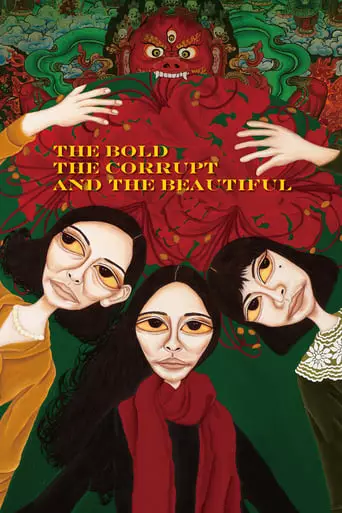
The Bold, the Corrupt, and the Beautiful (2017) Watch Online Free
Madame Tang colludes and mediates between the government and the private businesses for the benefits of her all-female family. One case does not go according to plan, and an entire family close to Madame Tang fall victim to a gruesome murder. Ambition, desire and lust eventually change Tang’s relationships with her own family forever.
The Bold, the Corrupt, and the Beautiful, directed by Yang Ya-che, is a Taiwanese crime drama set in the 1980s that delves into the intricate dynamics of a matriarchal family entangled in political corruption and moral decay. The narrative centers on Madame Tang, portrayed by Kara Hui, who operates as a middlewoman in illicit dealings between politicians and businessmen. She involves her two daughters, Ning-Ning (Wu Ke-Xi) and Chen-Chen (Vicky Chen), in these schemes, creating a facade of familial unity while manipulating them to serve her ambitions. The plot intensifies when a close associate’s family is brutally murdered, leading to a series of betrayals and revelations that expose the fragility of their relationships and the consequences of their corrupt actions. The film masterfully intertwines elements of melodrama, thriller, and family saga, offering a chilling portrayal of the lengths to which individuals will go for power and wealth.
Corruption and Moral Decay
The film provides a scathing critique of the pervasive corruption within political and business spheres, illustrating how moral decay infiltrates personal relationships and leads to devastating consequences. Madame Tang’s manipulative dealings serve as a microcosm of broader societal corruption.
Familial Manipulation and Betrayal
At its core, the narrative explores the complexities of familial relationships tainted by deceit and exploitation. Madame Tang’s control over her daughters, coupled with underlying tensions, highlights themes of betrayal and the erosion of familial bonds in the pursuit of power.
Female Agency and Power Dynamics
The film centers on strong female characters who navigate and dominate a male-dominated society through cunning and manipulation. It examines the ways in which women assert agency within oppressive structures, albeit through morally ambiguous means.
The Illusion of Beauty and Decay Beneath
The juxtaposition of opulent settings and the characters’ morally corrupt actions underscores the theme of superficial beauty masking inner decay. This contrast serves as a metaphor for the deceptive appearances maintained by individuals and society at large.
The Bold, the Corrupt, and the Beautiful garnered critical acclaim for its compelling storytelling, strong performances, and intricate portrayal of complex themes. The film received multiple awards, including Best Feature Film at the 54th Golden Horse Awards, solidifying its status as a significant work in Taiwanese cinema. Its unflinching examination of corruption and moral ambiguity resonated with audiences and critics alike, prompting discussions about the ethical implications of power and the dynamics of female agency within patriarchal societies.
Viewing The Bold, the Corrupt, and the Beautiful is an emotionally immersive experience that leaves a lasting impression. The film’s exploration of corruption, familial manipulation, and moral decay evokes a sense of introspection and contemplation. Its poignant storytelling and striking visuals may lead to feelings of unease, empathy, and a deeper appreciation for the complexities of human relationships and societal structures. The film’s open-ended questions and moral complexities encourage viewers to reflect on their own lives and the ethical boundaries they navigate, making The Bold, the Corrupt, and the Beautiful a thought-provoking and emotionally resonant cinematic journey.
